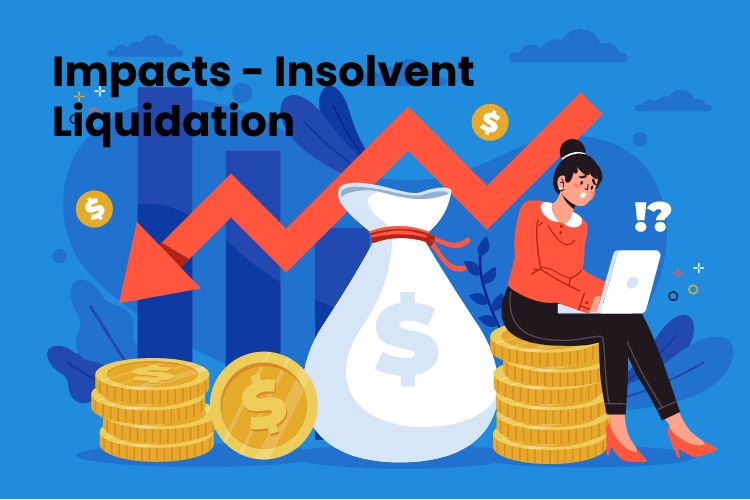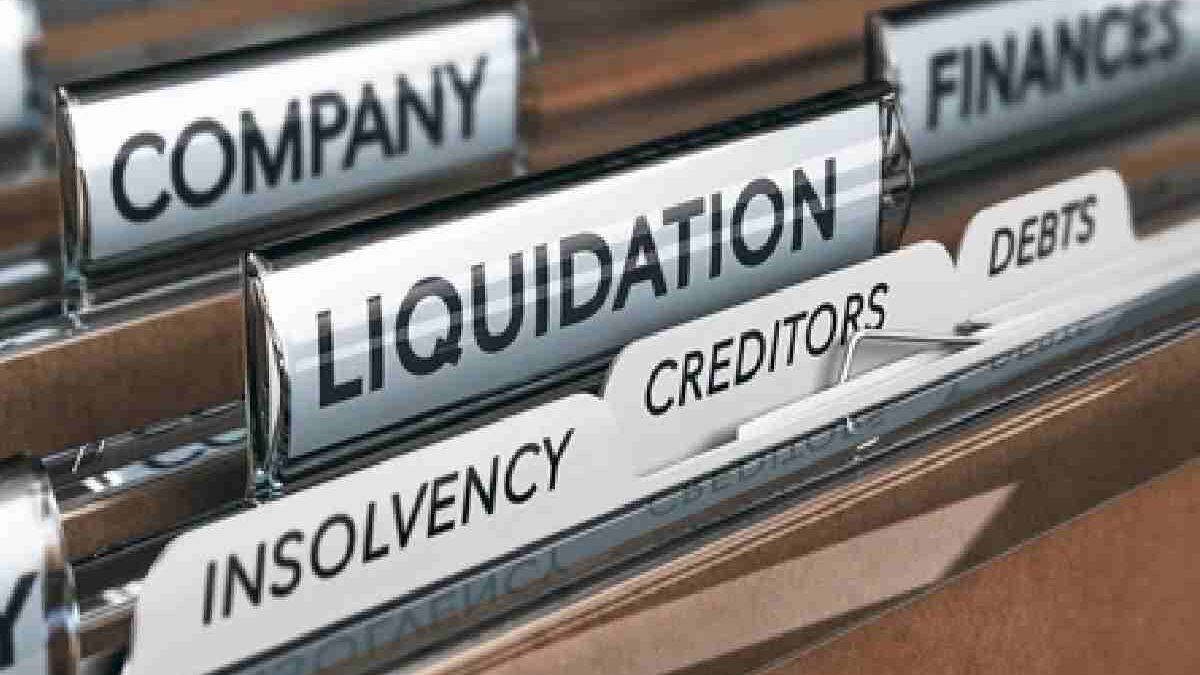Table of Contents
How to Liquidate an Insolvent Company?
Insolvent Liquidation This process is known as “liquidation judiciaries” and occurs when the company enters a state of “cessation des payments.”
The procedure can affect any company or independent worker, just like the Liquidation of a solvent company. However, a simplified process of a maximum duration of one year for individual companies. Without real estate and a turnover of less than €300,000. In some instances, it can also apply to companies with a turnover between €300,000 and €750,000. €.
Who can Request it?
The process can be requested by the company itself, the creditor who has noticed a lack of funds, or, in most cases, a judge appointed for the patient.
If started at the company’s request, the company must apply within 45 days after entering a state of insolvency. Once the company director has provided all the accounting books to show that the company cannot meet the payments, a judge will decide whether the “liquidation judiciaries” process can be carried out.
Similarly, a creditor who finds himself in a situation where he has stopped receiving his payments can request the company’s Liquidation since it is probably an insolvency case.
Insolvent Liquidation – Who is Involved?
- There are three main actors in the liquidation process: a designated judge and a liquidator. If any person responsible for ensuring that the rights of the employees are respects.
- The judge’s character is to control the entire liquidation process, from its opening to the final resolution, ensuring that all parties act under the law and appoint the liquidator.
- It is in charge of collecting all the debts that any third party has contracted with the company before opening the process.
- You must calculate the company’s debts with its creditors, employees, and the expenses derived from the judicial liquidation process since it has to answer for all of them.
- To pay debts, you must calculate the liabilities and take care of the sale of the company’s assets. To obtain all the available funds. However, if this is not enough, he is entitles to claim the personal assets of the director of the company. It is, in effect, the last option, in which case the director is given time to leave his primary residence if he is the owner since it will be used as a means of paying the debt.
- In any case, the company’s director must provide all the necessary information about the company’s accounting and assets to the liquidator to carry out the process. Not doing it correctly or refusing to do so can lead to a case of fraud.
- If the company has any employees, a person who ensures that employment insurance (mandatory for all companies) must take charge of the correct receipt by all employees of their corresponding salaries and benefits before termination of their contracts.
Impact – Insolvent Liquidation

A company that is in a liquidation process cannot persecute individually. In other words, any legal way to claim a debt will be blocked because there is already an open legal process, and it is the liquidator’s job to ensure the payment of the debts.
After starting the process, the company ceases to perceive any interest in its activity. If any claim is receives, it will be invested directly in the debt payment.
In the case of those people to whom the company owes money, they must claim the debt within a maximum period of two months after publication in the BODACC of opening the liquidation process or having their legal address outside of France, four months full.
End of the Process – Insolvent Liquidation
Insolvent Liquidation – The liquidation process can end in three ways:
- The company has sufficient money to pay all debts.
- It is impossible to request more liabilities from the company.
In case of Insufficient Assets – Insolvent Liquidation
It is the most common reason for ending up with a “liquidation judiciary,” which occurs when the company does not have enough money to pay its debts. The consequences of having insufficient assets are two:
- On the one hand, creditors cannot demand additional individual commitments from the company unless involve in a case of fraud.
- On the other hand, if a private estate or sum of personal money declare as a company bond, or if another person is named as guarantor, your personal belongings can legally use to pay off the debt.
In addition, it is essential to know that the company can be sold or transfers to another employer who wants to resume their activity or in an attempt to keep jobs.
Simplified Liquidation of an Insolvent Company
There are two types of simplified judicial Liquidation. The companies concerned belong to one or another category according to their average income and the number of employees. These two categories of simplifies judicial Liquidation is known as ‘mandatory’ and ‘optional.’
Mandatory Simplified Judicial Liquidation – Insolvent Liquidation
When the judge appointed for the liquidation process chooses this status for a company in default of payments to its creditors, said the company cannot file an appeal against the decision.
This type of Liquidation is designs to facilitate and speed up the process for smaller companies. However, it does not apply to any sole proprietorship without real estate.
In addition to this, they must possess these two qualities:
Have an average annual income equal to or less than €300,000. The middle obtains from the last three fiscal years before pronouncing the Liquidation. Have not employed more than one person in the previous six months.
If an individual company that has lost its solvency meets these requirements, the judge in charge will automatically decree the compulsory Liquidation of the firm. In this case, the procedure cannot last more than six months from its opening to its closing. Exceptionally, and as in a facultative settlement, it can extend for three additional months, as long as the increase is motivates by some compelling reason.
The Optional Simplified Judicial Liquidation – Insolvent Liquidation
Contrary to the compulsory liquidation process that we saw before, the individual company requests a simplify judicial liquidation process after declaring insolvent. Once again, if the petition grants, the decision is not subject to further appeal.
There are a series of criteria that the company must meet to request an optional liquidation:
- His annual income is between €300,000 and €750,000. These figures are obtains from the average income in the last three fiscal years before the opening of the Liquidation.
- In the last six months, the business has had five or fewer employees.
- Regarding this process, its maximum duration cannot exceed one year. With an additional three months if there are solid reasons to extend it.
How to Face the Insolvency of the Company – Insolvent Liquidation
Early Warning
In the first place, the Guide advises detecting future insolvency in advance to save time and resources. It involves carrying out an economic-financial control of the company and observing risks such as falling billing or margins, the need to convert fixed assets into money, the loss of concessions, or payment delays.
Insolvent but Viable
Controls allow knowing if the company is still solvent or not. In insolvency, there may be viability, a situation in which costs must reorganize, the company redirected, financing sought, and debts restructured. Negotiating with creditors through refinancing or extrajudicial or bankruptcy agreements (proposed and labor agreements) is necessary.
Insolvent and Unviable
It recommends studying the possibilities of extrajudicial agreements to liquidate the company, known as voluntary Liquidation.
Communicate the Agreements
When opening the negotiation with the creditors, it is necessary to communicate it to the competent court. Possible executions against the debtor or those already initiated suspension during the following three months. In the case of natural persons (natural persons), the term is two months.
Refinancing
Agreements Refinancing agreements are of two types: collective and singular. In the former, the debtor agrees with his creditors without judicial approval. The contract can be with one or several creditors in the special, and the judge never approves them.
Out-of-Court Payment
These types of agreements seek to de-judicialize processes and require the intervention of a bankruptcy mediator. The mediator has fewer responsibilities and obligations than a bankruptcy administrator. The rest will do so before the corresponding Mercantile Registry or Chamber of Commerce.
Role of the Mediator
As a first step, the go-between summons the debtor and his creditors within ten days, following the acceptance of the charge to reach an out-of-court payment agreement. He sends a proposal to the creditors, with the approval of the debtor, which can contemplate any of these measures: waits not exceeding ten years; you remove; conversion of credits in shares or participations of the company or other financial instruments; or transfer of assets and rights.
The plan is not Approved.
The mediator presents a consecutive contest if the creditors do not approve the proposal. Individuals do so before the Court of First Instance, and the rest of the debtors before a Commercial Court.
Consecutive
Insolvency – Insolvency is reaching after the refinancing agreement, or the extrajudicial payment agreement is reach, for failing to comply with them, or because of the nullity or judicial inefficiency of one of the two agreements declares.
Exemption of Unsatisfied Liabilities
When a natural person reaches the consecutive insolvency proceeding. They can still resort to the second chance system or benefit of exoneration of unsatisfying liabilities by which the debtor is releases from existing debts, with certain limitations.
Consecutive Insolvency Process
Suppose the bankruptcy declares at the request of the creditor. The bankrupt may submit an early proposal for an agreement or a liquidation plan within 15 days following the date that said the declaration has been notified. Individuals may only present a liquidation plan for the active mass. In the event of non-submission or inadmissibility of the early settlement proposal, non-approval of the settlement, and non-compliance with the approved payment, the judge will directly agree to open the liquidation phase. The judge appoints the mediator as insolvency administrator as a general rule.
Bankruptcy
This contest aims to distribute the active mass of the debtor among the creditors. It is presents two months from the insolvency and when there is no prior agreement. Bankruptcy is voluntary when given by the debtor himself and necessary when the creditors do it. It consists of three phases. The typical phase is the insolvency application, the declaration order, and the insolvency administrator’s report. The agreement phase includes, among other things, the presentation and admission of the proposals. The judicial approval of the majority accepted bid and its subsequent compliance or non-compliance. Liquidation is when the active mass is liquidating and proceeds to the distribution among the creditors.
Qualification
In this phase of the process, the possible responsibilities are clarified, determining if the competition is guilty or fortuitous.
Conclusion
Insolvent liquidation – The collection of current interest, interest on arrears, attorney fees, collection expenses, and costs of civil proceedings against the debtor stops. The person who accepts will then negotiate with his creditors from the capital of the obligations.

